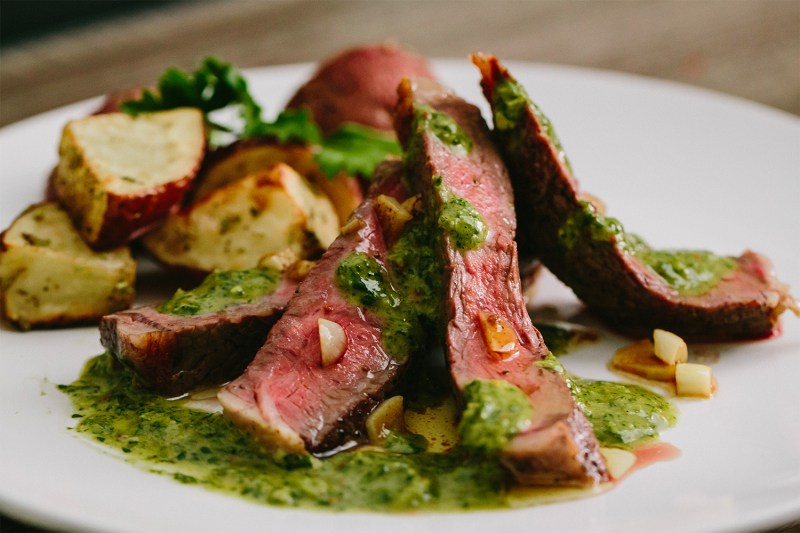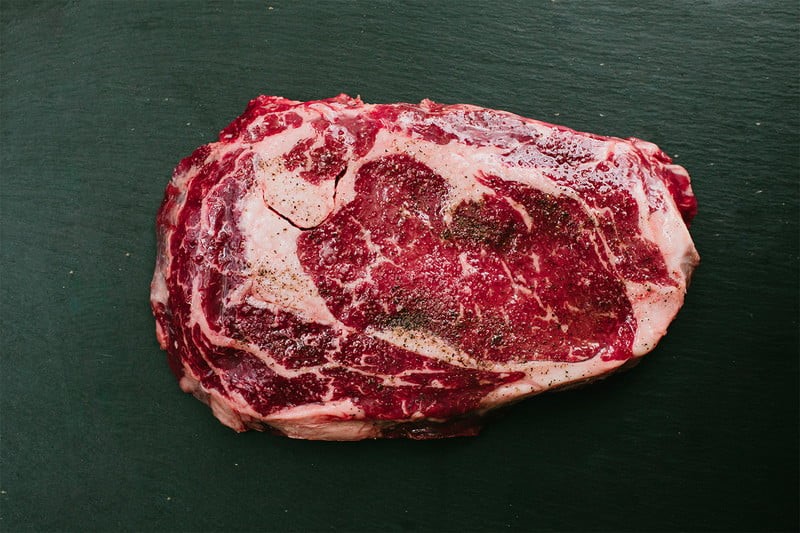
No hunk of meat gets more glory than the thick and savory middle-cut steak, and rightfully so. At the butcher, there are more popular primal cuts such as rib-eye, filet mignon, or strip, with each of them coming with its own distinct texture and taste.
For a tender cut that leans on fat yet is heavy on flavor, the strip steak is ideal for your paleo plate. From the loin is also where the strip’s classier cousin, the filet mignon that’s known for its buttery and robust taste, comes from. At the head of the herd is the rib-eye. The fat marbled rib cut wears the carnivore crown for being rich and juicy with an exceptional taste and tenderness. Bone-in or out, it’s a top choice for a restaurant-quality steak night.
What makes a great steak can form the basis for a heated debate but choosing the right steak cut for you depends on your preference for tenderness, flavor, and price range. Once you have the steak, you have to cook it just right. Keep reading to learn how to cook steak in the oven.

How to cook steak in the oven
While cooking over an open flame is the optimal steak situation, gearing up the grill isn’t always an option. However, with a quality cut of beef and a good cast-iron pan, the simplest way to cook a succulent steak is your stove.
Ingredients:
- 1 rib-eye, strip, or filet mignon
- Sea salt
- Fresh cracked pepper
- 1 tablespoon of your best olive oil
- 1 tablespoon salted butter
Method:
- Bring steak to room temperature and season heavily with salt and pepper, rubbing the seasonings onto both sides of the steak.
- Heat a cast-iron pan in the oven at 450 degrees Fahrenheit for 15 minutes. Remove cast-iron pan from the oven and place it on the stove, over high heat.
- Lightly coat the steak with oil, sprinkle with more salt, and place the steak in the center of the pan. Add butter to the pan and allow the steak to sear for 30 seconds on each side.
- Turn off the heat and return the pan to the oven with the broiler on high. Broil steak for 2 minutes on each side for rare (125 degrees Fahrenheit).
(add an additional minute to each side for medium-rare – 135 degrees Fahrenheit). - Remove steak from the pan and transfer to a cutting board. Allow steak to rest for 3-5 minutes before serving.

NOLA grilled potato salad
While we are discussing cooking your steak in the oven, when the weather gets warm, you’re going to want to fire up the grill. Here’s a great, easy side dish from David Guas, the chef/owner of the Bayou Bakery in Arlington, Virginia that pairs well with that tasty steak you’re cooking up.
(By David Guas, chef/owner, Bayou Bakery, Arlington, Virginia)
Ingredients:
- 2.5 pounds small red potatoes, skin on (approximately 20-22)
- 1 cup water
- .25 cup mayonnaise (Guas prefers Duke’s Mayonnaise)
- 1 tablespoon Creole mustard (Guas prefers Zatarain’s)
- .5 cup green onions, thinly sliced
- 1 tablespoon apple cider vinegar
- 1 teaspoon kosher salt
- ⅓ cup horseradish
- .25 teaspoon freshly ground black pepper
- 1 teaspoon Louisiana hot sauce (Guas prefers Crystal)
Method:
- Cut red potatoes in half. Split into two groups and wrap each group in aluminum foil like a little purse. Before closing the parcels, pour half a cup of water into each foil package.
- Place the parcels just off to the sides of the coals in the belly of the grill. Roast directly in the coals for about an hour or until fork-tender. When ready, remove from heat and let sit for about 10 to 15 minutes to cool slightly.
- In a large mixing bowl, mix mayonnaise, mustard, green onions, apple cider vinegar, kosher salt, horseradish, black pepper, and hot sauce. Add cooled/cut potatoes to the mix. Wearing gloves, use your hands to mash about one-third of the salad, or use the back of a wooden spoon to mash. Serve at room temperature.

Enjoy a cocktail with your steak
Now that you’re a steak cooking expert both on the grill and in the oven, it’s time to eat. Now, we all know red wine pairs nicely with steak, and we wouldn’t say no to a cold beer to go with that delicious meat, but nothing pairs with a good steak like a good cocktail. Here are some drinks that would be a perfect accompaniment to your steak dinner.
- Old Fashioned – This whiskey classic will elevate that juicy ribeye to the next level. The combination of bourbon, bitters, sugar, and an orange peel is so simple but oh-so-good. Learn how to make the perfect Old Fashioned here.
- Manhattan – Another all-time classic, the Manhattan was invented in, you guessed it, New York City. It’s now a sweet drink like the Old Fashioned, but the rye whiskey and bitters bring enough flavor to perfectly complement any cut of steak. Get the scoop on how to make a perfect Manhattan cocktail here.
Editors' Recommendations
- How to craft a heavenly vodka martini: Shaken or stirred
- This is how to make the perfect dirty martini
- Your guide to the pescatarian diet for healthier living
- Get creative: How to use hibiscus in your cocktails this spring
- What is caviar? A seafood expert breaks down all the details


